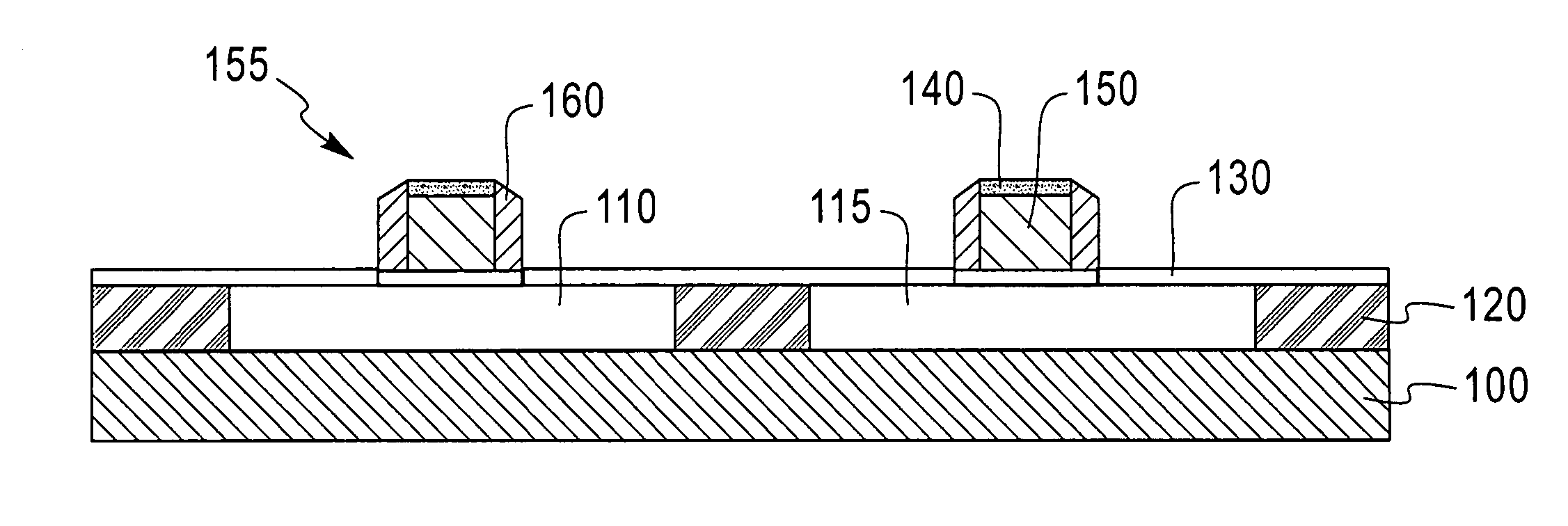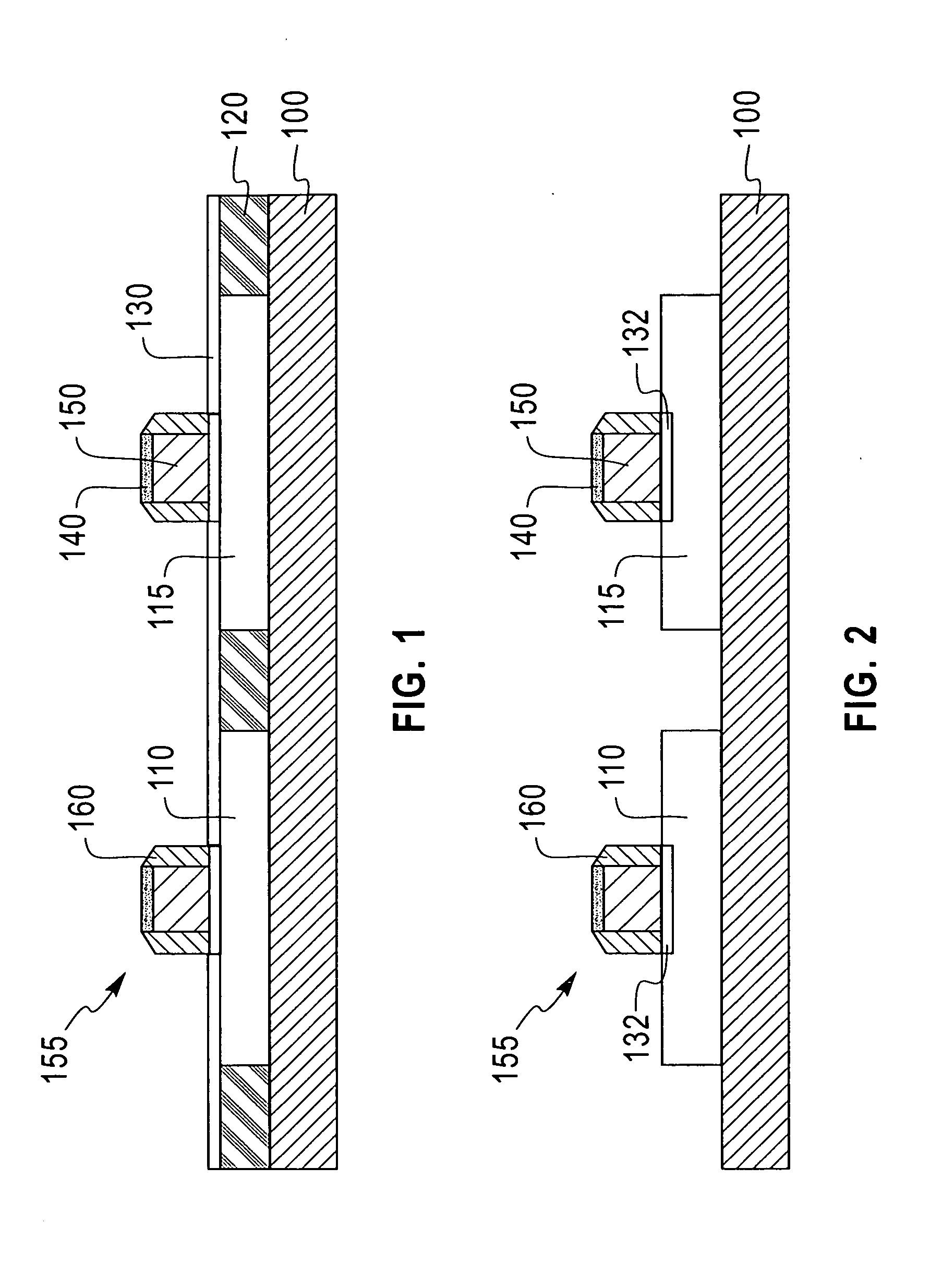Method and structure to reduce contact resistance on thin silicon-on-insulator device
a technology of metal oxidesilicon and contact resistance, which is applied in the direction of semiconductor devices, electrical equipment, basic electric elements, etc., can solve the problems of increasing the gap between the gate-to-source and drain overlap capacitance (miller capacitance), increasing the difficulty in forming low-series resistance source-drain contacts, and increasing the difficulty in avoiding silicidation of the source-drain diffusion from extending completely through the soi to the back oxide (or buried oxide),
- Summary
- Abstract
- Description
- Claims
- Application Information
AI Technical Summary
Benefits of technology
Problems solved by technology
Method used
Image
Examples
Embodiment Construction
[0019] Referring now to the drawings, and more particularly to FIGS. 1-15, there are shown exemplary embodiments of the method and structures according to the present invention.
[0020]FIGS. 1-14 illustrate an exemplary method of forming a MOSFET while controlling the silicide depth in the source / drain region of the MOSFET in accordance with certain embodiments of the present invention.
[0021] First, as depicted in FIG. 1, a low-k material (e.g., such as chemical vapor deposition (CVD) SiCOH, and spin-on low-k polymer material including SiLK and JSR porous low-k polymer, etc.) is used to form a sacrificial shallow trench isolation 120 on a silicon-on-insulator (SOI) wafer having a buried oxide layer 100. The bodies on the SOI wafer, which form pMOS 115 and nMOS 110, are properly doped. That is, doped to form a fully depleted body with a dopant concentration (p-type for NMOS and n-type for PMOS) of about 1E17 / cm3. Boron is an exemplary dopant for the PMOS and phosphorous and arsenic a...
PUM
 Login to View More
Login to View More Abstract
Description
Claims
Application Information
 Login to View More
Login to View More - R&D
- Intellectual Property
- Life Sciences
- Materials
- Tech Scout
- Unparalleled Data Quality
- Higher Quality Content
- 60% Fewer Hallucinations
Browse by: Latest US Patents, China's latest patents, Technical Efficacy Thesaurus, Application Domain, Technology Topic, Popular Technical Reports.
© 2025 PatSnap. All rights reserved.Legal|Privacy policy|Modern Slavery Act Transparency Statement|Sitemap|About US| Contact US: help@patsnap.com



